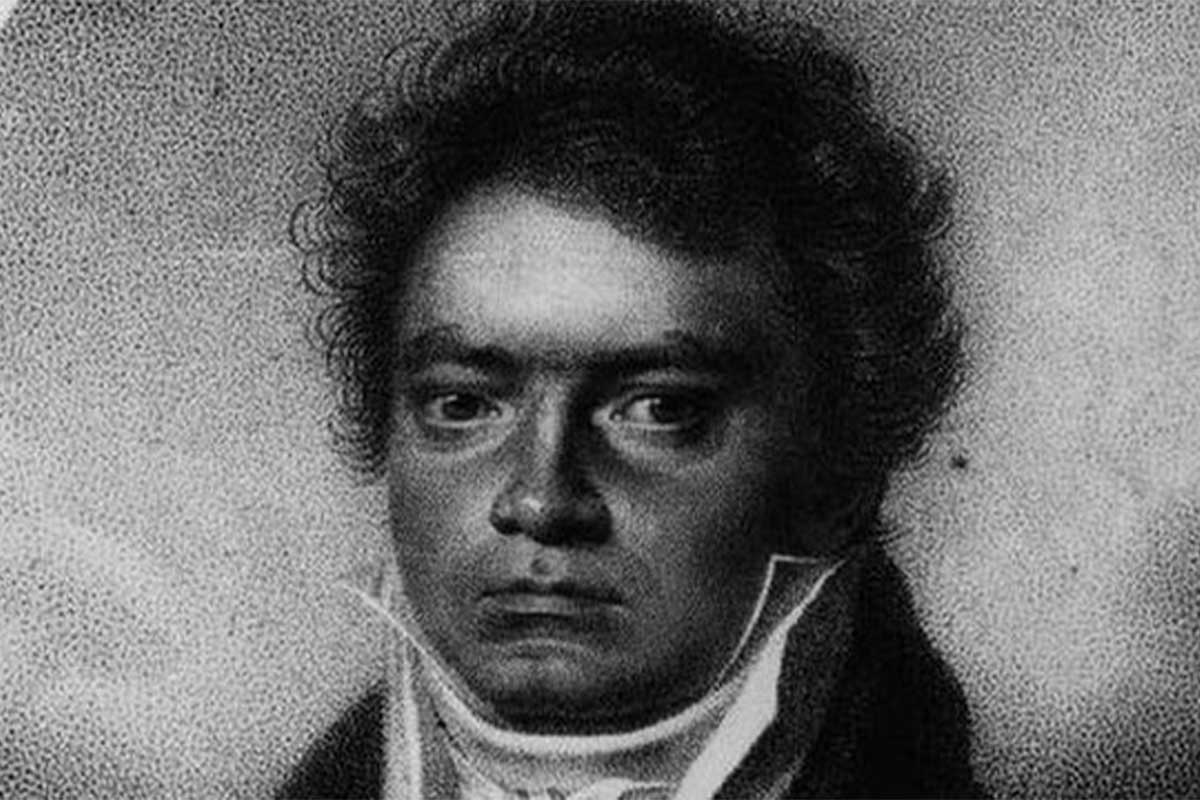Ludwig van Beethoven was of African descent, and the truth of his ethnic origins was covered up through a mixture of white powder worn on his face when out in public, the use of body doubles for portraits, and “euro-centric” historians, hiding the truth of his genetic heritage. This is the claim of a new website, that not only alleges that Beethoven’s African roots was well-known to the Viennese elite, who allowed the “illusion” of a white Beethoven to persist after his death, but that the proof of Beethoven’s true cultural background is contained within his music.

This radical assertion isn’t new: theories have simmered quietly for decades claiming the composer was descended from North African relatives. Rather than basing this conclusion on genealogical studies however, this claim is often attributed to Beethoven’s familial connections to the Flemish region of northern Europe, which had been invaded and ruled by Spain, a nation with connections to the North African Moor culture. This is often coupled with anecdotal descriptions of Beethoven being nick-named “Spaniard” or “Moor” because of his dark, swarthy complexion, and certain portraits of the composer which appear to show him with very dark skin.
However, www.beethovenwasafrican.com is refocusing this old debate to explore the potential cultural clues in the composer’s music. The website claims that within Beethoven’s Piano Sonatas are African polyrhythms, that adhering rigidly to the existing scores obscures. According to the site, historical accounts of Beethoven’s performances of his own music offer proof that the written scores do not contain the full, African influenced character of the composer’s intentions. One unattributed quote cited on the site says, “His extemporizations were the most extraordinary things that one could hear. No artists that I ever heard came at all near the height, which Beethoven attained. The wealth of ideas which forced themselves on him, the caprices to which he surrendered himself, the variety of treatment, the difficulties, were inexhaustible.”
Related: The Limelight Guide to Classical Music – Ludwig van Beethoven
In an effort to reveal the alleged intended rhythmic identity of Beethoven’s music, an album, Beethoven was African – Polyrhythmic Piano Sonatas, is available, with artificially computer generated performances of the African infused interpretations of Beethoven’s Sonatas.
While it provides an interesting twist on these well-known classics, the general consensus among musicologists and historians is that Beethoven was not a North African descendent, and that any conspiracy to conceal the truth is in fact baseless. There are no historical accounts during his lifetime that refer to the composer as black or a “moor”, and the Viennese of the 18th and 19th centuries were well aware of persons of African descent, referred to at the time as moors and mulattos, such as George Bridgetower, who was a famous violinist and creative collaborator of Beethoven’s.












Comments
Log in to join the conversation.